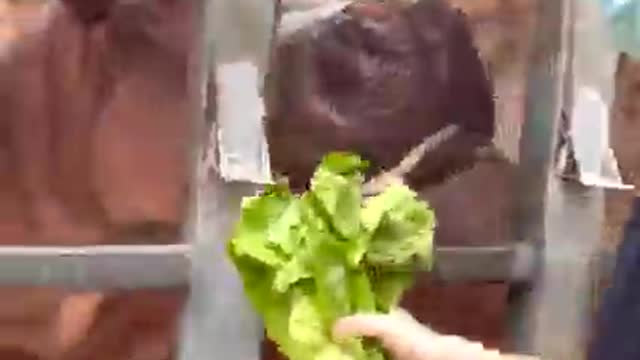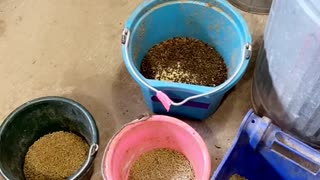Premium Only Content

It's time for breakfast with the Hippos 🦛
After the elephant and rhinoceros, the hippopotamus is the third-largest type of land mammal and is the heaviest extant artiodactyl (in the traditional, non-cladistic sense of the term, excluding cetaceans). Despite their physical resemblance to pigs and other terrestrial even-toed ungulates, the closest living relatives of the Hippopotamidae are cetaceans (whales, dolphins, porpoises, etc.), from which they diverged about 55 million years ago. Hippos are recognisable by their barrel-shaped torsos, wide-opening mouths revealing large canine tusks, nearly hairless bodies, columnar legs and large size; adults average 1,500 kg (3,310 lb) for bulls and 1,300 kg (2,870 lb) for cows. Despite its stocky shape and short legs, it is capable of running 30 km/h (19 mph) over short distances.
Hippos inhabit rivers, lakes, and mangrove swamps, where territorial bulls preside over a stretch of river and groups of five to thirty cows and calves. During the day, they remain cool by staying in the water or mud; reproduction and birth both occur in water. They emerge at dusk to graze on grasses. While hippos rest near each other in the water, grazing is a solitary activity and hippos are not territorial on land. The hippo is among the most dangerous animals in the world due to its highly aggressive and unpredictable nature. They are threatened by habitat loss and poaching for their meat and ivory canine teeth.
-
 2:41
2:41
Georgiahightower
2 years agoBreakfast time with the Ducks
165 -
 0:09
0:09
ViralHog
3 years ago $0.05 earnedOwen Knows When it's Breakfast Time
3142 -
 LIVE
LIVE
The Dana Show with Dana Loesch
1 hour agoTRUMP SLAMS SPENDING DEAL | The Dana Show LIVE On Rumble!
574 watching -
 35:43
35:43
Grant Stinchfield
1 hour agoThe C.R. in One Page, Anything Longer is the Deep State Exposed
3.53K2 -
 23:06
23:06
The Shannon Joy Show
4 hours ago🔥🔥Live EXCLUSIVE W/ Patrick Wood On Drones, Bitcoin, Artificial Intelligence & The Technocracy🔥🔥
5.35K2 -
 2:19:25
2:19:25
Matt Kohrs
12 hours agoMarket Chaos || The MK Show
61.9K6 -
 32:38
32:38
Rethinking the Dollar
2 hours agoDebt Ceiling Drama: What Trump Wants Now | Morning Check-In
5.07K5 -
 2:02:10
2:02:10
LFA TV
14 hours agoDING DONG THE BILL IS DEAD! | LIVE FROM AMERICA 12.19.24 11am EST
31.7K24 -
 37:31
37:31
BonginoReport
6 hours agoShut It Down (Ep.108) - 12/19/2024
107K264 -
 LIVE
LIVE
Vigilant News Network
18 hours agoBUSTED: ‘The View’ Co-Host May Face Criminal Investigation | The Daily Dose
1,007 watching